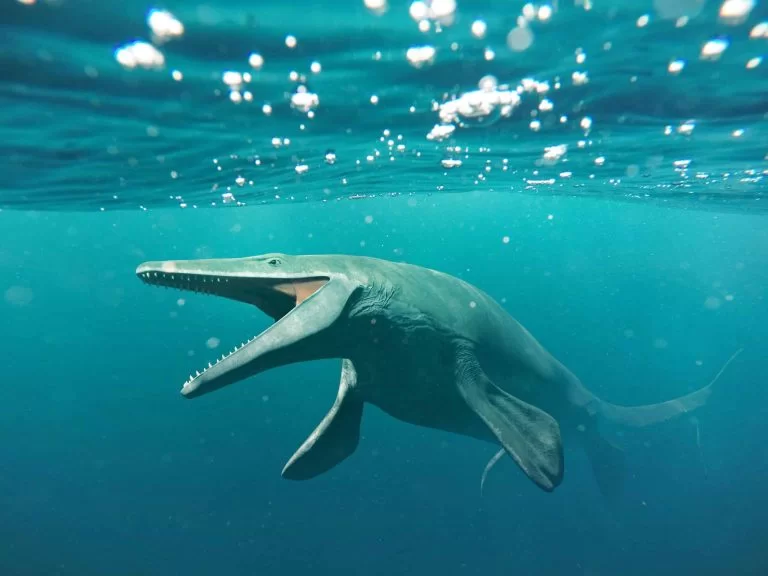The ocean has many life forms, ranging from microscopic plankton to colossal whales. The blue whale (Balaenoptera musculus) stands out as the biggest sea creature ever. It is also the largest animal, surpassing the dinosaurs' size and weight. The blue whale is a marvel of nature, with a body perfectly adapted to its aquatic environment and a mysterious and fascinating lifestyle. In this article, we will know the Biggest Sea Creature.
Biggest Sea Creature: Size and Appearance
The blue whale can reach a maximum confirmed length of 29.9 meters (98 feet) and weigh up to 199 tonnes. Its heart weighs around 1,500 pounds and can be detected from two miles away. Its mouth can hold up to 90 tonnes (99 tons) of water. Its blowhole can spray water up to 30 feet in the air.
The blue whale’s body is long and slender, with a broad, flat head and a tapered tail. Its skin colour can vary from greyish-blue to light blue, with lighter patches on the belly and darker spots on the back. It has a dorsal fin that is small and curved, located near the tail. It has two pectoral fins that are long and narrow, used for steering and balance. It has a series of grooves on its throat and chest that expand when it feeds.
Diet and Feeding
The blue whale is a filter feeder, meaning it feeds by straining small organisms from the water. Its main prey is krill, tiny shrimp-like crustaceans that swarm in huge numbers in the ocean. The blue whale can consume up to 40 million krill daily, equivalent to about 3.6 tonnes (4 tons) of food.
To feed, the blue whale opens its mouth wide and engulfs a large volume of water containing krill. It then closes its mouth and pushes the water out through its baleen plates, rows of stiff, comb-like structures hanging from its upper jaw. The baleen plates trap the krill inside the mouth, letting the water pass through. The blue whale then swallows the krill whole.
The blue whale usually feeds near the water's surface, where krill are abundant. However, it can also dive deep to find more food, reaching depths of up to 500 meters (1,640 feet) and staying underwater for up to 20 minutes.
Behaviour and Communication
The blue whale is generally solitary or gathers in small groups of two to four individuals. It does not have a well-defined social structure, except for the bond between mother and calf. It migrates between its summer feeding areas near the poles and its winter breeding grounds near the tropics.
The blue whale communicates with other whales using low-frequency sounds that can travel long distances underwater. These sounds include moans, groans, pulses, clicks, and songs. The blue whale’s song consists of repeated patterns of sounds that vary in pitch and duration. The purpose of these songs is not fully understood, but they may be used for mating, navigation, or identification.
Conclusion
Blue whale is an amazing creature that deserves our respect and admiration. It is the biggest sea creature ever to have existed and one of the most magnificent animals on Earth. It has a body that is perfectly adapted to its aquatic environment and a lifestyle that is both mysterious and fascinating. It has a status that is endangered and vulnerable. It needs our protection and conservation.


